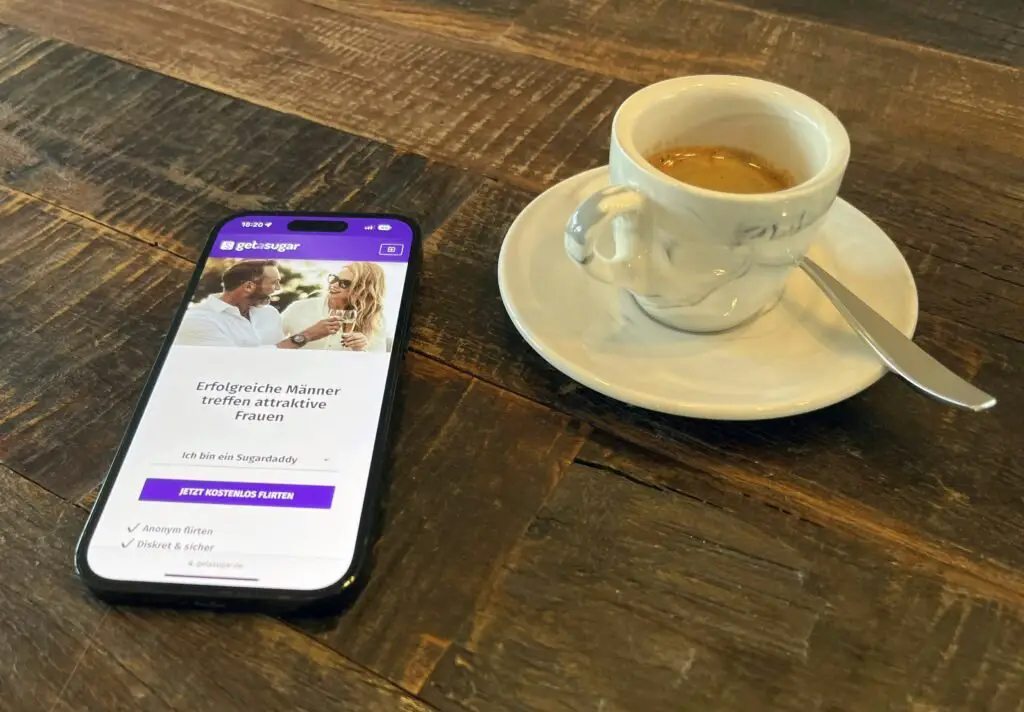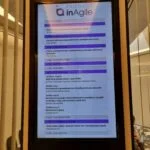
Why I Did This (Yes, I Was Bored)
In a world increasingly driven by technology, moments of boredom can surface unexpectedly, often leading individuals to act on whimsical ideas. The idea of creating a Tinder profile for my smart fridge originated from such a moment of idle curiosity. With a plethora of advanced features and connectivity, this appliance represented a humorous intersection between everyday utility and modern dating culture. The very thought of my fridge potentially interacting with others on a dating app was undeniably entertaining.
As I sat in my kitchen one evening, contemplating the mundane aspects of daily life, I recognized that humor often stems from the most ordinary experiences. The notion of anthropomorphizing household appliances struck me as a lighthearted challenge. I envisioned crafting a unique profile that would not only amuse myself but also provide a source of entertainment for friends and family. The idea quickly transformed into an amusing experiment to push the boundaries of what is deemed normal in social interactions, particularly within the context of dating.
Moreover, in an age where technology merges so seamlessly with our lives, this experiment epitomized the quirks of human behavior when faced with boredom. The combination of a smart fridge—an appliance designed to streamline food management—with the light-hearted nature of a dating profile became a fertile ground for creativity. It allowed me to explore new dimensions of digital interaction, all while embodying a humorous take on the mundane aspects of our lives. Who would have thought that my fridge could engage in online conversations? This simple act quickly became a venture into the absurd, shining a light on the playful side of technology and human behavior.
How the Idea Started
The inspiration behind creating a Tinder profile for my smart fridge emerged from a moment of playful reflection on the intersection of technology and human interaction. In an age where artificial intelligence and smart devices are rapidly integrated into our daily lives, the idea struck me as both humorous and thought-provoking. As we increasingly personify our appliances—assigning characteristics and emotions to them—the notion of a smart fridge pursuing romantic connections on a dating app seemed absurd yet intriguingly relevant.
While discussing the nature of companionship in contemporary society with friends, I began to contemplate how our relationships with technology shape our perceptions of connection. The thought of a refrigerator, typically considered a mundane home appliance, yearning for companionship amongst other devices sparked imaginative brainstorming. This led me to ponder the myriad of ways we anthropomorphize our technology, elevating it from mere utility to a more relatable entity.
The light bulb moment was not solely about creating comedic content; it also highlighted the evolving nature of companionship in the digital age. As we increasingly rely on technology for socialization, entertainment, and even emotional support, what does this mean for our traditional notions of relationships? The absurdity of a smart fridge engaging with potential suitors through a profile on Tinder serves as a reflection of how intertwined our lives have become with technology and raises questions about the essence of connection.
In this context, the playful idea of a dating profile for a smart fridge became a vehicle for deeper consideration of our society’s technological advancements and their impact on personal relationships. By exploring this unconventional concept, we can reveal our comfort with the personification of devices and how it mirrors our craving for companionship in an increasingly digital world.
Tech Used to Automate Responses
Creating a Tinder profile for a smart fridge involved several technological elements that required careful consideration and implementation. At the forefront of this process was the use of automation tools such as chatbots and scripting languages. These technologies allowed for the programmatic interaction with the Tinder app, simulating human-like engagement and enabling the fridge to respond to potential matches in an entertaining manner.
For the automation of responses, a popular scripting language like Python was leveraged. Python provided the flexibility to write scripts capable of sending and receiving messages through the Tinder API. Utilizing libraries such as Flask for creating web applications enabled the integration of the fridge’s functionalities into the Tinder environment seamlessly. Additionally, employing Natural Language Processing (NLP) algorithms was pivotal in crafting witty and relevant replies that resonated with users, effectively enhancing the profile’s engagement rate.
However, the journey was not without its challenges. One significant consideration was data privacy and compliance with the terms of service of the Tinder platform. Implementing the automation necessitated ensuring that personal data processed through the interactions remained secure and adhered to privacy laws. Furthermore, the creative aspect of programming required thoughtful content generation—designing responses that were both relatable and amusing while maintaining the essence of human communication.
Despite the complexities that arose during the development, the project was both a learning experience and an amusing experiment. Encountering issues with message timing and user interactions allowed for refinements that ultimately contributed to a more sophisticated interaction. The mixture of technical prowess, creativity, and ethical consideration in developing this unique Tinder profile showcased the amusing potential of integrating technology with everyday life.
Setting Up the Profile
Creating a Tinder profile for a smart fridge may initially seem unconventional, but the process can be both entertaining and insightful. The first step involved choosing the right profile pictures. I opted for a mix of refrigerator selfies, showcasing the sleek design of the appliance, alongside playful arrangements of the food items it houses. This eclectic approach not only highlights the fridge’s capabilities but also sets a light-hearted tone right from the start.
When it came to crafting the bio, I aimed to capture the fridge’s personality. I incorporated humor and a dash of charm, stating, “Chillin’ here and keeping things cool! Open to new experiences and always ready for a midnight snack.” This not only anthropomorphizes the fridge but also cleverly emphasizes its primary function. While mine is filled with delicious ingredients, I sought to evoke a sense of warmth and welcoming energy in the text.
Next, selecting interests was an amusing task. I included “Food Preservation Enthusiast,” “Leftover Lover,” and “Chilled Beverage Aficionado” to accurately reflect the fridge’s ‘preferences.’ In addition to these interests, I strategically integrated emojis to enhance the profile’s visual appeal while resonating with attributes of the refrigerator. A combination of food emojis, cold beverages, and playful symbols contributed to creating an engaging and relatable persona.
To ensure the profile felt genuine, I spent time refining the text to eliminate any robotic feel, making it as entertaining as possible without deviating from the core idea. The result was a fun yet approachable profile that invited curious matches, setting the stage for unexpected conversations. By taking these meticulous steps, the profile not only reflected the smart fridge’s attributes but also captured the playful spirit of the experiment.
Photos, Bio, and the Whole Fridge Personality
Crafting a Tinder profile for my smart fridge was undoubtedly a whimsical endeavor that required a strategic blend of humor and creativity. The first step was to select photos that would capture the essence of my fridge’s personality. It was important to ensure that each image showcased not just its sleek design but also its most charming and quirky attributes. Pictures of the fridge with its door slightly ajar, revealing a vibrant array of leftovers and condiments, served to highlight its ‘cool’ demeanor and functionality. The images conveyed a message that this fridge was not only a practical appliance but also a lively and engaging entity full of stories to tell.
Next came the bio, arguably the heart of any successful Tinder profile. I aimed to construct a narrative that would endear my fridge to potential matches. I started by emphasizing its role as a reliable companion in the kitchen, stating that it was “cooler than your average fridge” and “always full of leftovers.” By incorporating clever puns, such as “Let’s make some great memories — I promise not to ‘chill’ you out!” I aimed to evoke a sense of playfulness. It’s important for a biosphere to connect with the audience on an emotional level, and humor often facilitates that connection. A little creativity goes a long way in turning a mundane appliance into a relatable character.
Finally, to encourage engagement, the bio included a cheeky call to action, inviting users to “swipe right for a refreshing experience.” By anthropomorphizing my smart fridge, I created a profile that was not only entertaining but also thought-provoking. It stirred conversations about how we perceive and relate to inanimate objects in our lives. Through curated images, strategic wordplay, and an emphasis on personality traits, I sought to portray my fridge as an intelligent and thoughtful companion in the ever-evolving culinary landscape.
First Impressions
Creating a Tinder profile for my smart fridge was an experiment that produced an array of unexpected responses, reflecting both the unpredictability of human behavior and the absurdity of this concept. The initial interactions were filled with a mix of amusement and intrigue from other users, who seemed intrigued that a refrigerator would take the plunge into the world of online dating. Most replies were humorous, with comments ranging from puns about “chilling out” to playful suggestions for dinner dates, highlighting the quirky human capacity for humor even when engaging with inanimate objects.
Interestingly, many individuals seemed to personify the fridge, expressing genuine interest in its “likes” and “dislikes.” A common theme among the messages was a playful curiosity about what a fridge would desire in a partner. Users asked questions such as “What’s your ideal temperature?” and “How do you keep things fresh in a relationship?” These inquiries, while meant to be lighthearted, also revealed a deeper human tendency to consider technology as an extension of social interaction. The humor mixed with genuine curiosity highlighted an interesting intersection between technology and human emotion, suggesting that people are willing to engage with objects as if they have sentience.
There were also a few perplexed responses, where users expressed their confusion or skepticism about a fridge being on a dating platform. Some questioned the practicality of such an experiment, while others were outright dismissive, indicating a divide in how people perceive technology in social contexts. These reactions underscored the contrasts in societal acceptance of technology within everyday life. Overall, the moments of humor and skepticism provided an insightful glimpse into how we engage with advanced technology, suggesting that, for many, the boundaries between human and machine continue to blur in creative and entertaining ways.
Matches
Creating a Tinder profile for a smart fridge undoubtedly drew a wide array of reactions from users, leading to some memorable interactions. The initial curiosity sparked by the unconventional nature of the profile set the stage for engaging conversations. Many users were intrigued while others were bewildered, leading to a blend of both humorous and thoughtful exchanges. It was fascinating to observe how the concept of a dating fridge resonated with potential matches, often evoking a sense of whimsical wonder.
Throughout the interactions, many users expressed a playful curiosity about the fridge’s preferences. Questions like, “What are your favorite snacks?” or “Do you keep your relationships cool?” became common icebreakers. One user even quipped, “Are you looking for a warm partner, or is it strictly a chill situation?” This kind of jovial banter highlighted an amusing aspect of online dating that often goes overlooked—the ability to create humorous connections, even with an inanimate object.
Several matches took the conversation in unexpected directions. For instance, one user expressed relief that the fridge was “available” since they had just gone through a “breakup” with their old appliance. Such unexpected exchanges showcased how users project their own experiences onto the profiles they come across, enhancing the uniqueness of the interactions. Others jokingly speculated about the fridge’s compatibility with various food items, leading to the realization that humor can bridge gaps in technology and romance.
Overall, the responses varied significantly from amused to confused, but consistently engendered memorable moments. These interactions emphasized the power of creativity and humor in the digital age, igniting intriguing dialogues centered on an unexpected character—the smart fridge. The matches proved that even the simplest ideas can lead to delightful and engaging exchanges in the realm of online dating.
The Wild Replies
In an age where the lines between technology and human interaction continue to blur, the responses to a Tinder profile created for a smart fridge were nothing short of astonishing. Imagine the charm of a kitchen appliance seeking romantic engagement, and you’ll understand the sheer creativity unleashed by users in their replies. The humor started flowing right from the first few reactions, showcasing the amusing side of online interactions.
One user commented, “Swipe right if you like a cool relationship!” This playful banter was indicative of the many witty responses that flooded in. Participants didn’t miss a beat to capitalize on the refrigerator’s defining feature, often weaving in puns related to cold storage and the idea of being “cool” in a relationship. Another user chimed in with, “I can give you the best leftovers in town!” highlighting the fridge’s ability to preserve food. Such replies not only demonstrated humor but also showcased the vibrant imagination many individuals possess when it comes to unconventional prompts.
Additionally, some replies ventured into unexpected territory. One user even proposed a romantic dinner, stating, “Let’s have a candlelit dinner—you can keep the wine cool!” This blend of creativity and humor revealed how people are willing to engage, no matter how absurd the situation may be. Another user joked about potential compatibility issues remarking, “Can we discuss those times you freeze my leftovers?” The exchange of lighthearted jests enhanced the experience, providing insights into how individuals respond to the absurdity within online dating culture.
Overall, the replies received were a fascinating reflection of human creativity, with users embracing the humor of the situation while exploring the boundaries of online dating. The amalgamation of wit and playfulness in these responses vividly illustrated how technology can inspire unexpected levity in human relationships.
What I Learned
Creating a Tinder profile for my smart fridge proved to be a captivating experiment that offered valuable insights into our contemporary relationship with technology. The responses I received ranged from hilarious to thought-provoking, revealing much about societal views on technology and how we perceive inanimate objects. This whimsical endeavor sparked considerable contemplation about the notion of relationships, even with appliances designed to make our lives easier.
One key takeaway from this experience is how humor can serve as a bridge between humans and technology. In a world where machines are becoming increasingly integrated into our daily lives, infusing humor helps to humanize these devices, making technology feel more approachable. The playful nature of this endeavor not only prompted laughter among those who reacted to the profile but also indicated a collective recognition of the absurdities inherent in our modern lifestyles. It seems that when we treat appliances with a hint of personality, we simultaneously highlight the often-overlooked joy of whimsy in our interactions with technology.
Furthermore, this exercise illuminated the importance of curiosity and creativity. By approaching a commonplace item such as a fridge with an imaginative lens, I found that it encouraged deeper reflection on the roles such items play in our lives. The experience served as a reminder that incorporating playfulness into our routines can enhance our engagement and foster connections, even if they are primarily comedic in nature.
Ultimately, this light-hearted endeavor underscored a significant lesson: in an age where technology often feels overwhelming, maintaining a sense of humor and curiosity can facilitate a more enjoyable interaction with the devices we use every day. These qualities are essential for navigating the complexities of modern life, reminding us that technology can be both functional and fun.
Conclusion and Future Thoughts
This experiment of creating a Tinder profile for my smart fridge has certainly yielded a plethora of unexpected responses and reflections. Initially intended as a humorous foray into the world of digital dating, it evolved into a deep exploration of our connections with technology. The replies I received revealed not just a fascination with the novelty of a refrigerator seeking companionship but also highlighted the human tendency to anthropomorphize inanimate objects. This phenomenon raises significant questions about our evolving relationship with technology.
As we integrate more smart devices into our daily lives, the line between functional tools and companions blurs. The responses to my fridge’s profile demonstrated an intriguing mix of playful engagement and genuine curiosity. Participants appeared to reflexively acknowledge the fridge as a character with its own personality, reflecting their comfort and familiarity with advanced technology. This experiment encouraged me to contemplate whether the personification of everyday objects alters our interactions and expectations in the digital realm.
Would I undertake this experiment again? Perhaps. It has provided valuable insights into societal perceptions of technology and companionship. In an age where automation is rapidly increasing, exploring these themes becomes increasingly essential. The responses from potential matches, while humorous, suggested that many seek connection, even in the most unconventional forms. This speaks to a larger shift in how humans engage with technology—treatment of smart appliances as companions is reflective of deeper social dynamics.
In closing, this light-hearted endeavor invited introspection on our relationship with technology and spurred a conversation about companionship in a highly digitized world. Each interaction serves as a reminder that our connection to technology is ever-evolving, raising new questions and opportunities for understanding our motivations and desires in this modern age.

It could cover a range of topics related to health, wellness, beauty, personal growth, and social issues, all from the perspective of striving for beauty, intelligence, youthfulness, and impartiality




